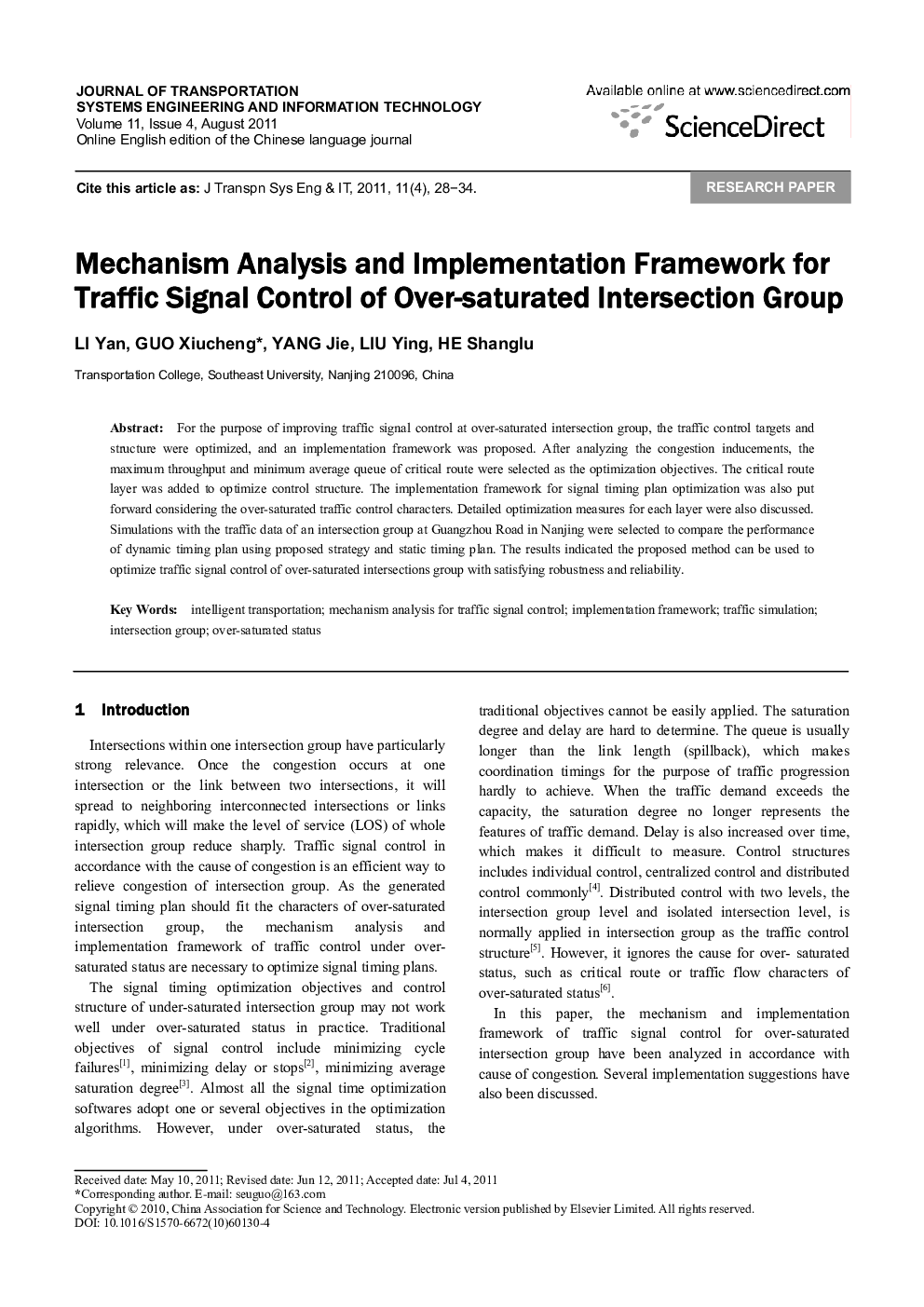| Article ID | Journal | Published Year | Pages | File Type |
|---|---|---|---|---|
| 108557 | Journal of Transportation Systems Engineering and Information Technology | 2011 | 7 Pages |
For the purpose of improving traffic signal control at over-saturated intersection group, the traffic control targets and structure were optimized, and an implementation framework was proposed. After analyzing the congestion inducements, the maximum throughput and minimum average queue of critical route were selected as the optimization objectives. The critical route layer was added to optimize control structure. The implementation framework for signal timing plan optimization was also put forward considering the over-saturated traffic control characters. Detailed optimization measures for each layer were also discussed. Simulations with the traffic data of an intersection group at Guangzhou Road in Nanjing were selected to compare the performance of dynamic timing plan using proposed strategy and static timing plan. The results indicated the proposed method can be used to optimize traffic signal control of over-saturated intersections group with satisfying robustness and reliability.
摘要为改善过饱和状态交叉口群的交通控制效果,优化了交通控制目标和结构,制定了信号配时方案优化的实施框架。在分析溢流、滞留排队和阻挡等拥堵诱因的基础上,根据优化过饱和状态交通控制的需求,选取关键路径通过车辆数最大和平均排队最小作为优化目标。在单点交叉口层和交叉口群层间增加关键路径层,优化交通控制结构。结合过饱和状态交叉口群交通控制特性,提出信号配时方案优化的实施框架及分层优化措施。南京市广州路交叉口群仿真验证结果表明,按信号配时优化框架建立的配时算法,可显著增大交叉口群内关键路径的通过车辆数,降低平均排队长度,改善过饱和状态交叉口群交通运行状况。
